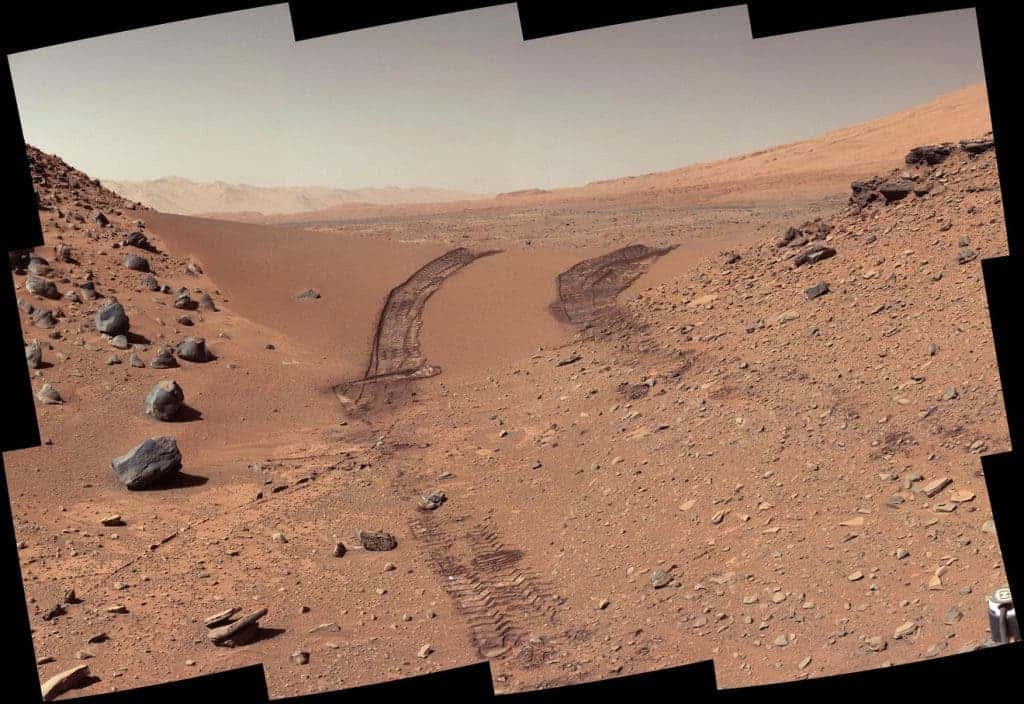NASA has announced that certain organic salts are “likely present” on Mars. While this doesn’t necessarily mean that the salts were created by life on Mars (other processes can also produce the substances), it definitely makes it much likelier.

Research on Mars is, understandably, much more difficult than research on Earth. It’s not just the distance, it’s the limited tools that researchers have at their disposal. In this case, they had to work with instruments on the NASA Curiosity Rover, especially the SAM instrument (Sample Analysis at Mars).
SAM incinerates samples and tries to figure out what they were made off based on what gases were released at what temperatures. SAM can only offer indirect evidence of organic salts, so there’s still some uncertainty, but if the finding is confirmed (for instance, with the CheMin instrument onboard Curiosity), it could be a promising hint for the search of Martian life.
“If we determine that there are organic salts concentrated anywhere on Mars, we’ll want to investigate those regions further, and ideally drill deeper below the surface where organic matter could be better preserved,” said James M. T. Lewis, an organic geochemist who led the research, published on March 30 in the Journal of Geophysical Research: Planets. Lewis is based at NASA’s Goddard Space Flight Center in Greenbelt, Maryland.
“We’re trying to unravel billions of years of organic chemistry,” he said in a press release, “and in that organic record there could be the ultimate prize: evidence that life once existed on the Red Planet.”
Organic salts (the remnants of organic molecules) are essential for NASA’s search for life on other worlds. The salts are especially interesting because on Earth, some organisms can use them for energy. Finding them, however, is very difficult on Mars — because, unlike the Earth, Mars isn’t protected from radiation, and billions of years of radiation have erased or broken apart organic matter.
Curiosity would dig beneath the surface where the organic matter may be better protected, but it’s not clear where to dig. Still, the fact that researchers are finding organic chemicals on the surface is an encouraging sign.
“The fact that there’s organic matter preserved in 3-billion-year-old rocks, and we found it at the surface, is a very promising sign that we might be able to tap more information from better preserved samples below the surface,” says NASA Goddard astrobiologist Jennifer L. Eigenbrode, who previously lead a team that reported the detection of myriad molecules containing an essential element of life as we know it: carbon. Eigenbrode worked with Lewis on this new study.
The plan is now to look for hotspots of this type of substance, and when something interesting pops up, zoom in on that area and use Curiosity’s small drilling machine to peek beneath the surface.
Soon, Curiosity will also get a helping hand from the European Space Agency, whose forthcoming ExoMars rover is equipped to drill much farther — down to 2 meters (6.5 feet). NASA’s Perseverance rover doesn’t have an instrument that can detect organic salts, but will help in a different way: collecting samples to be returned to Earth, where researchers can analyze them with sophisticated equipment.
For now, conclusive evidence of ancient life on Mars remains tantalizing. But with each new piece of information coming from the Red Planet, we learn something new about Mars and about its past (and maybe even current) ability to host microbial life.
Was this helpful?



